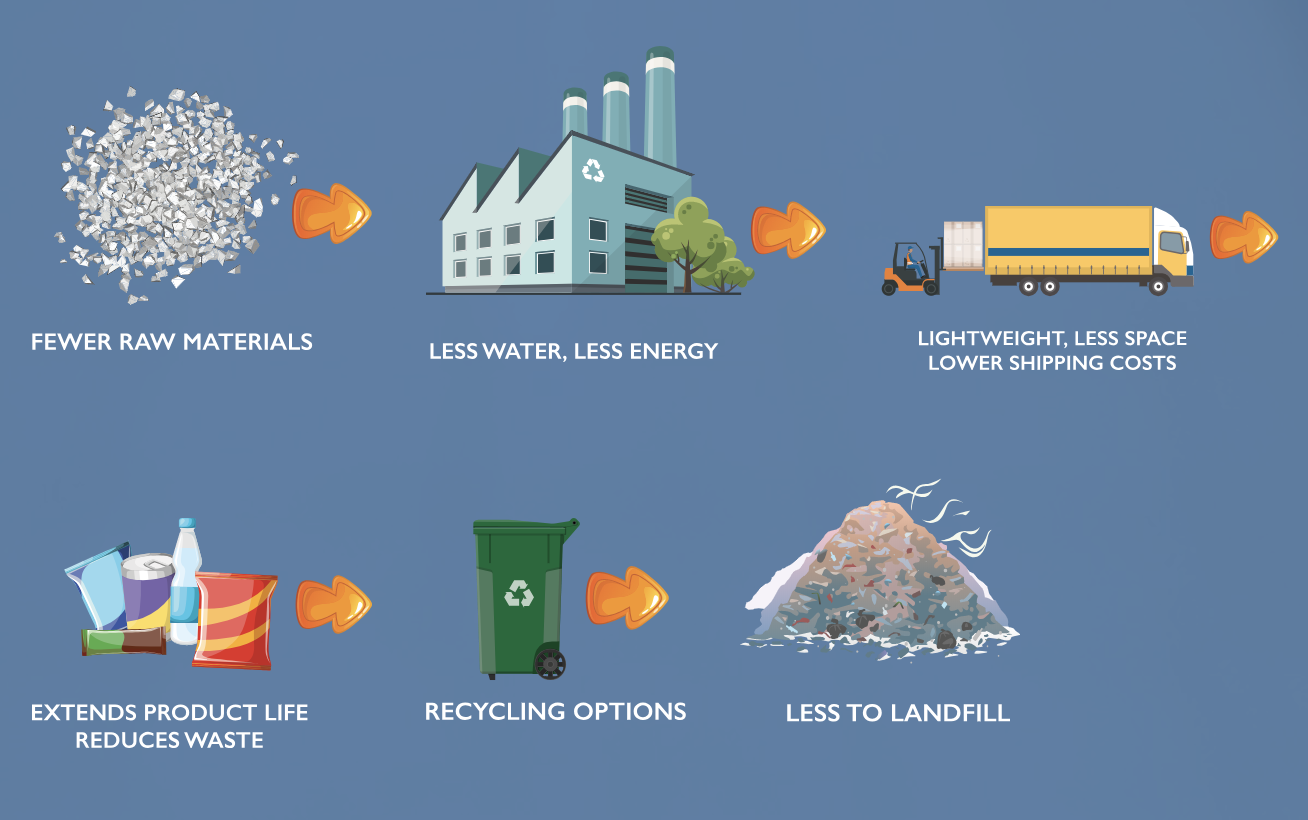The frozen foods segment delivers easy and healthy options to consumers looking for a quick meal prep and added convenience to their busy day.
When developing packaging for this segment, consider what’s important to the consumer, and how the package will fit into their daily lives.
Flexible packaging offers consumers a variety of user-friendly features, and consumers love them. According to Marina Mayer, Editor-in-Chief of Refrigerated & Frozen Food magazine, there are some key attributes that consumers look for in their frozen food packaging.
“Flexible packaging in the frozen foods space is the future. And, it’s all about convenience and sustainability. Today’s consumers want recyclable packaging that clearly depicts the brand’s messaging. They want resealable pouches that spell out ingredients and benefits. They want portability in the form of microwave-ability features and zipper closures. And, consumers want to lower fossil fuel usage, greenhouse gas emissions, water usage and the amount of packaging sent to the landfill. Flexible packaging offers endless solutions to all of these challenges and consumer demands,” says Mayer.
When developing a new frozen food product and package, there are three things that you should consider for a successful package: convenience, sustainability, and a great design.
1. Convenience Is King
A great frozen food package should offer the consumer some benefit, if not multiple. Bags and pouches are the main package format in the freezer aisle because they do just that. They are eco-friendly and offer consumers convenience features like being lightweight, unbreakable, and resealable. They’re also easy to hold, use, and store, all for consumer convenience.
Frozen food bags and pouches should offer resealability to allow consumers to easily open and (fully) close the package while maintaining the freshness of the contents inside.
They should also ensure that the product is easy to prepare. Many packages, especially frozen vegetables, allow consumers to cook the product right in the bag, inside the microwave. This makes mealtime faster and simpler, without needing a separate dish to cook the product.
Consumers crave convenience, but the cravings don’t stop there.
2. Consumers Want Sustainability
Aside from convenience, today’s consumers are looking for sustainability in their products, from the way the product is manufactured to how the package will help to reduce waste. To aid in this, many bags and pouches are equipped with reseal technology, enabling consumers to easily pick out a single serving of their favorite snack, vegetable, or protein, and reseal the bag or pouch for later use. This also ensures that the product inside is not subject to freezer burn. This, in turn, reduces the amount that must get thrown out, reducing waste.
The material of the pouch itself can also aid in waste reduction. According to the Flexible Packaging Association (FPA), flexible packaging uses fewer resources to create than other package formats. At ePac, we are committed to finding ways to continue to improve flexible packaging’s impact on our environment. Part of this commitment includes sourcing recyclable films. And, all ePac recommended pouches are constructed of materials that minimize the transfer of oxygen and moisture vapor to maintain product freshness, and reduce waste.
Additionally, digital production is a much more environmentally conscious form of printing than conventional printing. Ozone creation, energy demand, water depletion, and the overall impact on Global Warming are all substantially reduced. And, it’s not without notice. According to Mintel, the culture today is “embracing the role of packaging as a primary means to reduce global food and product waste.” Consumers see packaging as more than simply garbage to be disposed of; they now view packaging as a means to extend the freshness of food, preserve the product inside and deliver the goods safely.

Photo Credit: Perfect Packaging
Packagers have a lot of opportunities here to deliver to consumers a better, greener package that accomplishes all these things while delivering convenience and a great design.
3. The Design Difference
Design is incredibly important when it comes to packaging frozen food items. Just think, the package must stand out to consumers through a layer of glass (sometimes even when that glass is fogged over). Because of this, the design should be vibrant, clear and eye-catching.
Scour the frozen food aisles and you’ll likely see various brands and varieties of essentially the same thing. From potatoes to waffles, vegetables, and chicken products, there is a lot of competition.
Digital printing on flexible packaging gives you an advantage over other brands. The great thing about it is the ability to produce high-impact graphics with 360-degree artwork for a really stand-out product. What’s more, because no plates are needed, there is no long set-up time. This flexibility makes adding a SKU, changing a recipe, or adding promotional information to an existing package quick and easy. Also, the innovative digital printing technology allows you to print on demand, reducing high inventories and waste.
The frozen food market is anything but frozen. There is so much opportunity to appeal to new consumers through the use of packaging and help them make mealtime a snap, while in turn boosting sales.
Be sure to offer convenience, sustainability, and a great design to capture consumer attention. In addition, consider offering different package sizes for single-serve, a meal for two and multi-serve packs to appeal to different consumer groups.
Call us today to get a free quote to see how we can partner with you to develop a winning package in the frozen foods space.
